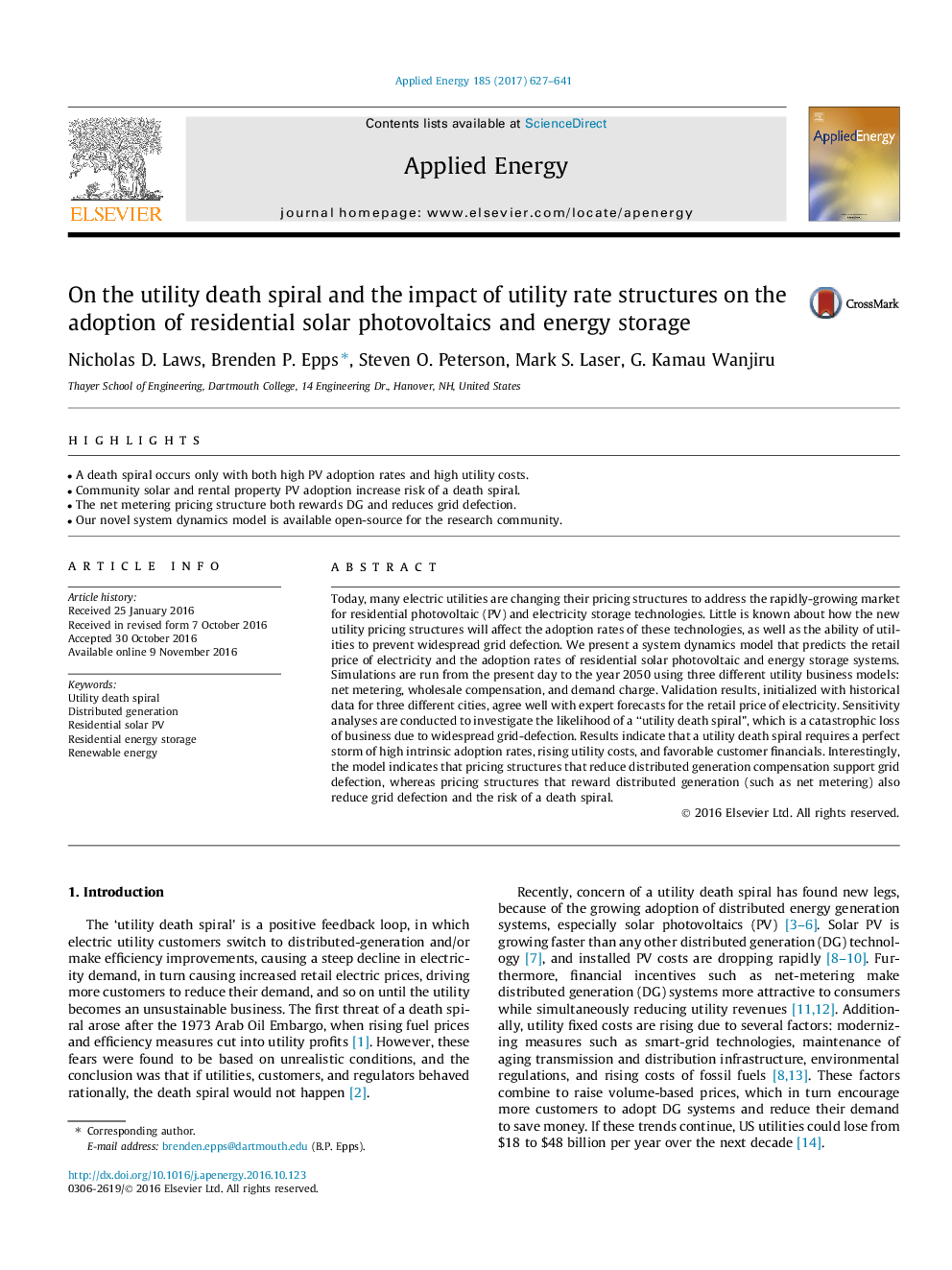| Article ID | Journal | Published Year | Pages | File Type |
|---|---|---|---|---|
| 4917001 | Applied Energy | 2017 | 15 Pages |
Abstract
Today, many electric utilities are changing their pricing structures to address the rapidly-growing market for residential photovoltaic (PV) and electricity storage technologies. Little is known about how the new utility pricing structures will affect the adoption rates of these technologies, as well as the ability of utilities to prevent widespread grid defection. We present a system dynamics model that predicts the retail price of electricity and the adoption rates of residential solar photovoltaic and energy storage systems. Simulations are run from the present day to the year 2050 using three different utility business models: net metering, wholesale compensation, and demand charge. Validation results, initialized with historical data for three different cities, agree well with expert forecasts for the retail price of electricity. Sensitivity analyses are conducted to investigate the likelihood of a “utility death spiral”, which is a catastrophic loss of business due to widespread grid-defection. Results indicate that a utility death spiral requires a perfect storm of high intrinsic adoption rates, rising utility costs, and favorable customer financials. Interestingly, the model indicates that pricing structures that reduce distributed generation compensation support grid defection, whereas pricing structures that reward distributed generation (such as net metering) also reduce grid defection and the risk of a death spiral.
Related Topics
Physical Sciences and Engineering
Energy
Energy Engineering and Power Technology
Authors
Nicholas D. Laws, Brenden P. Epps, Steven O. Peterson, Mark S. Laser, G. Kamau Wanjiru,
